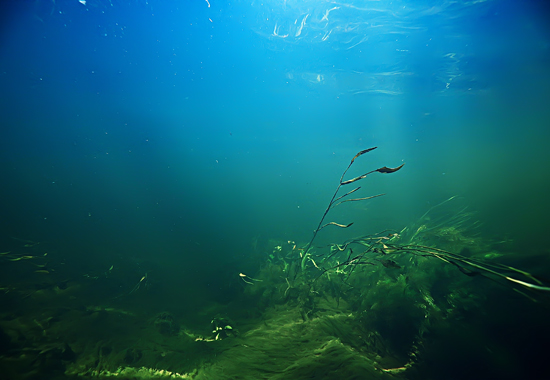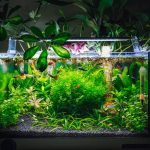Algae growth is one of the most common issues you may face as a fish tank owner. Planning and better understanding these microscopic organisms (plants) will ensure your fish tank remains safe and clean.
Cures of different types of Algae in an Aquarium
Identifying the type of Algae in your fish tank is a crucial step before starting any treatment, as there are various ways to remove algae based on its type.
Diatom or brown algae:

Diatom or brown algae are like brown dust and can cover rocks, glass, substrate, and plants in a slimy film. It emerges where there is a high range of silicates, nitrate, phosphorus, and low light. It is a common problem in the new Aquarium because of its cycling process, where water conditions still need to be fixed. If you see brown algae in your fish tank, change 50% of the water and remove algae with a sponge or algae scraper. Scrub the algae with a brush over the rocks and add algae-eating fish, shrimp, or snails. Avoid placing your water tank in direct sunlight, as it is one of the primary sources of algae in a fish tank. Check the water flow in your tank, and if the water flow is slow, install a powerful filter for balancing. The diatom is not difficult to overcome, and you can get rid of it by taking the proper steps.
Black Beard Algae:
Black Beard Algae or BBA. BBA looks like a clump of hair; it could be black, grey, or reddish and grows on leaves, ornaments, or hard surfaces. It usually comes in a tank through a recently purchased plant or driftwood that already has Black Beard Algae. Initially, it is like a small black or red mark, but it grows into longer strings if not controlled earlier. carbon dioxide CO2 fluctuation can also lead to BBA algae. When you have BBA in your tank, try to remove it manually. If you discover BBA on the plants, remove them from the fish tank and soak their leaves in bleach-based water. The bleach ratio should be 1 to 10, meaning you should combine 1 cup of bleach with 10 cups of water. Please these plants in this bleach-based mixture for two minutes, then wash off the plant with tap water. Be careful, as excessive bleach exposure can severely harm these plants.
Note: The Algae affected leaves will turn red when they die.
Hair Algae:

Green hair algae form in an aquarium as small green patches and quickly grow into longer strings-like hair; that is why these are called hair algae. The leading causes behind this kind of Algae are a higher range of phosphate and nitrate in water, excessive light (for almost 8 hours a day), and carbon dioxide (CO2) instabilities. You can overcome green hair algae by ripping it off manually with a scraper and keeping the phosphate at 0.05 ppm and nitrate at less than 20 ppm. Nutrients in the leftover fish food in your fish tank are one key reason for the high phosphate level. So don't overfeed your fish, and make sure your fish consume all foodstuffs you put in the fish tank. You can reduce nitrate levels by changing 50% of the tank water change every other month.
Green dust and green spot algae:

Green dust algae are like a film or dust. It appears over the aquarium glass or aquarium rocks. You can wipe it off, but if the cause is left untreated comes back. Green dust algae can come due to high lighting or nutrient imbalance. Over range, ammonia and nitrate can also make this happen. Green spot algae are stubborn compared to dust algae which are not as difficult to remove as green spot algae. It is a round green spot on aquarium glass, hardscape, or slow-growing plants. You can use a credit card, algae scraper, or hydrogen peroxide will remove the tough spots that didn't remove manually. I hope this article will help you eliminate algae from the fish tank, however. If you are facing a very stubborn kind of algae that is not booting from your fish tank, you're about to give up on your Aquarium because you cannot get rid of this algae. Hydrogen peroxide (H2O2) treatment could be applied as a last resort when all the standard methods of removing the algae are not effectively working. For more details, read this article
Categories: Aquarium Maintenance, Tags:
More Related Posts
How to set up Planted Fish tank for Beginners
- Aquarium
- Aquarium Maintenance
Date Posted - November 08, 2023
How do you Clean a Fish Tank?
- Aquarium Maintenance
Date Posted - November 01, 2023
Nature Style Aquascape Ideas and Tips For Beginners
- Aquarium Maintenance
Date Posted - September 18, 2023
Aquarium Substrate Ideas and Aquarium substrate types
- Aquarium
- Aquarium Maintenance
Date Posted - September 06, 2023




